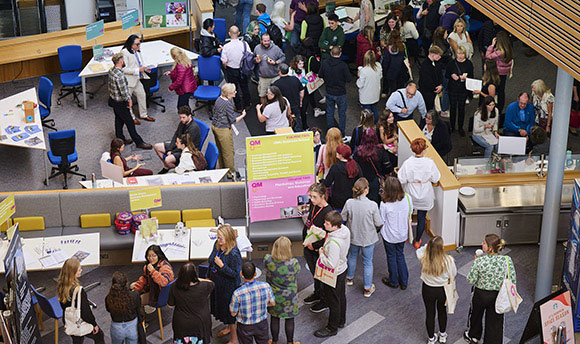QMU Impacts of COVID-19 restrictions on Scotland’s Refugees: Sudden-onset isolation in a neglected population group
Acknowledgements
We are very grateful to the refugees and asylum seekers across Scotland who expressed interest in our study and kindly gave up their time to take part in online/telephone interviews to share their experiences and insights with us. We sincerely hope that the outcomes of this study will contribute positively to their lives and others like them who have faced the challenge of integrating into new communities while simultaneously being disrupted by the COVID-19 pandemic. Their generous contributions made our research possible.
This study was enabled through the financial support of the Chief Scientist Office of the Scottish Government.
We would like to thank the Scottish Refugee Council, in particular, Gary Christie (Head of Policy, Communications and Communities), Elodie Mignard (Scottish Refugee Council Programme Manager) and Wafa Shaheen (Head of Services) for supporting our work and linking us with their network of refugees and asylum seekers.
We are thankful to the staff at the Convention of Scottish Local Authorities (COSLA), specifically Gayle Findley, Policy Manager, COSLA Migration, Population and Diversity Team, who connected us with other interested Local Authority Coordinators who promoted our research among their networks of resettled refugees: Jackie Kerr, Humanitarian Protection Co-ordinator, Protecting People Team, Dundee Council; Gail Ward, Housing Policy Officer (Welfare Reform, Housing Support
Services, Refugee Resettlement) Community Services, The Highland Council; Claudia Serra, Housing Support Officer, Housing Support Shetland; Morag Brown and Hannah Greening, Refugee Support, Argyll and Bute Council; Juman Almusawi, East Renfrewshire.
Finally we would like to give thanks to the staff at VoiceOver Interpreting Services founded by the Govan Community Project who provided valuable interpretation and translating services for our study as well as the following volunteers for transcribing our research interviews: Aishling Dempsey, Daphne Lola-Luz, Fiona Landin, Elise McHardy, Sara Pitkanen, Maja Fomin, Lauren Miller, Abigail Clifford, Amanda Kinnear, Joely Snedden, Emma Gwynne, Luis Robertson, Christine Myrillas and Joly Ghanawi.
Research Advisory Group
The implementation of this study was supported in numerous ways through the involvement of our research advisory group, particularly Sawsan Osso and Felician Francis, who gave their time expertise and shared stories of their lived experience with us to ensure that our research could be carried out successfully in a very short timeframe.
Executive summary
Project Background
This report presents findings from a study conducted by researchers from Queen Margaret University (QMU) and funded by the Chief Scientist Office of the Scottish Government in response to the COVID-19 pandemic. The main aim of this study was to better understand the impact of sudden- onset isolation, brought on by measures to combat COVID-19, on neglected population groups – specifically Scotland’s refugees and asylum seekers.
Introduced on 23 March 2020 in response to a surge in COVID-19 infection rates, the first UK-wide lockdown essentially closed most public and social life, with highly restrictive ‘stay at home’ orders issued by the UK government. Measures taken to reduce virus transmission (such as shutdown of public and workspaces, limited social interaction, mandatory physical distancing, quarantine, wearing masks and reducing social contact) were intended to delay the spread of infection and to bring the virus under control.
Over the months that followed the first lockdown, easing of restrictions took place, enabling more people to socialise together and allowing resumption of additional services and businesses. By August 2020 however, case numbers began to rise again, leading to reintroduction of restrictions in many areas of Scotland. The measures put in place, along with the ongoing cycle of easing and reintroduction of restrictions, have inevitably been extremely socially isolating experiences for many. Such isolation is expected to have considerable impact on wellbeing, especially for those who are already socially vulnerable in different ways.
Between the months of July and November 2020, the QMU research team conducted a study to examine the experiences of refugees and asylum seekers in Scotland in navigating life under the pandemic and lockdown restrictions. To do so, the QMU research team sought data on the extent and quality of refugees’ and asylum seekers’ social networks during the pandemic restrictions, to explore the relationship between sudden-onset isolation, loneliness, mental health and wellbeing.
To accomplish this the study asked the following questions:
-
What social networks do refugees across Scotland have access to during the COVID-19 restrictions?
-
What impact is COVID-19 social isolation having on sense of wellbeing amongst refugees in Scotland?
- What is the relationship between sudden-onset isolation and Scotland’srefugee communities’ experience of loneliness and sense of vulnerability or resiliency?
The QMU research team conducted interviews with fifty-one asylum seekers and refugees living in Scotland. Interviews were held remotely via Zoom or WhatsApp and were supported by an interpreter as needed. Each interview lasted between 40 to 90 minutes and followed a semi- structured topic guide. The topics included in the guide were informed by members of a Research Advisory Group (RAG) which included people with lived experience as refugees and asylum seekers along with research partners; Scottish Refugee Council (SRC) and the Convention of Scottish Local Authorities (COSLA). Ethical approval was granted by the QMU Research Ethics Committee.
SRC, COSLA and members of the RAG shared invitations for volunteers to contribute to the study. Interviewees of 18+ years were then selected according to a sampling frame to broadly reflect the diversity of refugees resident in Scotland (immigration status; age, gender, location in Scotland, country of origin). Interviews were recorded and audio transcribed. The research team reviewed each interview independently before identifying themes and collating them across cases. This summary outlines key thematic findings from this study.



